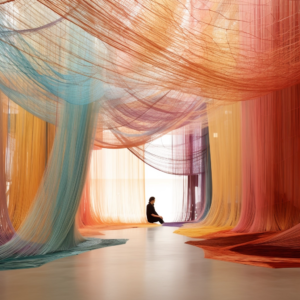CAREER CHANGE: FROM LUXURY RETAIL TO AI
For this guest blog, we are pleased to have Anne Dudek share her thoughts from her career change from traditional architecture to a tech-driven firm, more specifically, AI – Artificial Intelligence. Perhaps, she provides further proof that one with an architecture education can pursue any discipline.
If interested in careers beyond, read our publication, Careers in Architecture & Beyond.
Architects find order in chaos; we gleefully walk into the unknown and ill-defined and start to, literally and figuratively, draw lines around it. Throughout my architectural education, I was told that I was not being taught how to design but how to think; think through creative yet well-structured solutions that span the gamut of macro, micro, profound, and pedestrian.
“I was told that I was being … taught …how to think; think through creative yet well-structured solutions that span the gamut of macro, micro, profound, and pedestrian.”
While I believe architects are an exceptionally diverse-minded group of people, the commonality is a desire for lifelong learning. As the nature of chaos in our society shifts and changes, so must architects learn and adapt our approach to ordering.
In undergrad, my goal while earning my degree in Architecture was not to become an architect but rather to be a curator at an Architecture and Design department of an art museum. I understood then that problem-solving through design is a widely applicable skill, and I wanted to use it in art museums. After graduate school and a few jobs in art museums, my approach changed, and I went the more traditional route to working in an architecture firm specializing in luxury retail design. After a decade in luxury retail, I moved into the technology space at a startup specializing in Artificial Intelligence (AI).

Louis Vuitton Men’s Miami Design District, completed 2021
To put it mildly, this shocked and confused quite a few people: a move from the exceptionally physical world of creating luxury spaces to the digital and theoretical world of AI and its applications. The impetus for the career change stemmed from those outside the architectural field structuring the solution to the chaotic dawn of the AI era for my own profession.
I commonly saw articles where the sentiment of AI in architecture amounted to “the end of the architects.” These articles lacked the understanding that we in the field have about the capacity, nuance, and multiplicity of design. We recognize that architecture is not a mere trade but an expansive realm of expertise; a culmination of individuals’ experiences, societal need, and humanity with its insatiable curiosity to alter the world using creative perspectives and tools.
To believe that architects are mere draftsmen to be replaced with AI generation is to miss the philosophy and art that truly separate architecture from construction. Therefore, I founded my design studio on the thesis that going forward AI will be a fundamental step in the design process. This reordering of my design process to include AI allows for the expanded capacity and increased quality of my own human creativity.

AI: Concept Proposal for an Art Space
This is macro design thinking: that we have not only learned how to design architecture but how to design our own profession.
My transition from traditional architecture to a tech-driven firm underscores the transformative power architects possess. Our skills in ordering chaos arm us with the ability to innovate across industries. As we continue to nurture our curiosity and embrace lifelong learning, we, as architects, will undoubtedly continue to influence and reshape the world around us.
“As we continue to nurture our curiosity and embrace lifelong learning, we, as architects, will undoubtedly continue to influence and reshape the world around us.”
Anne Dudek, Founder – rad Studios
Instagram: @rad_____studios
